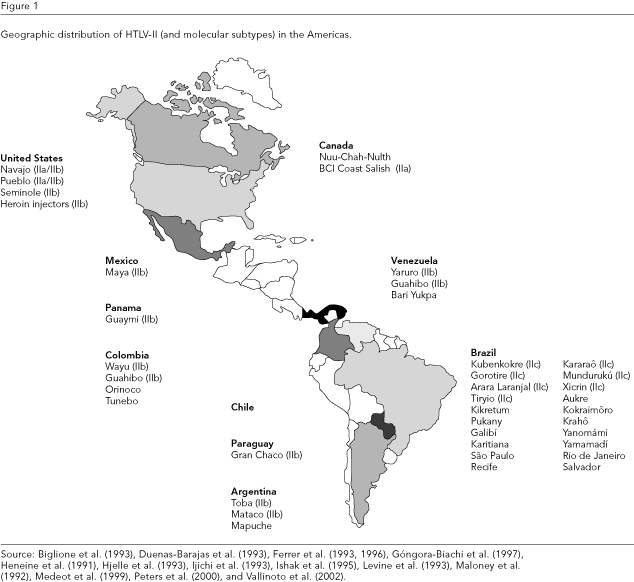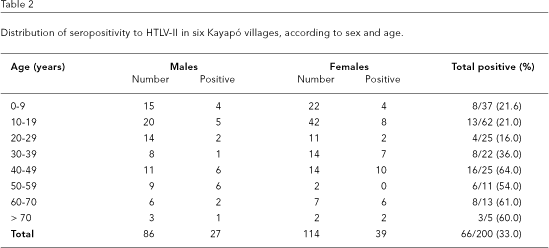HTLV was initially described in association with a form of leukemia in Japan and a neurological disease in the Caribbean. It was soon shown that HTLV-II was endemic among Amerindians and particularly among Brazilian Indians. The Amazon Region of Brazil is presently the largest endemic area for this virus and has allowed several studies concerning virus biology, the search for overt disease, epidemiological data including detailed demographic data on infected individuals, clear-cut geographic distribution, definition of modes of transmission and maintenance within small, epidemiologically-closed groups, and advances in laboratory diagnosis of the infection. A new molecular subtype named HTLV-IIc was further described on the basis of genome sequencing and phylogenetic analysis. This subtype is present in other areas of Brazil, indicating that the virus is additionally both a valuable marker for tracing past human migration routes in the Americas and a probable marker for social habits of the present human population. HIV, the other human retrovirus, is still not prevalent among indigenous communities in the Brazilian Amazon, but these groups are also easy targets for the virus.
Human T-Lymphotropic Virus II; Retroviridae; South American Indians; Amazonian Ecosystem






